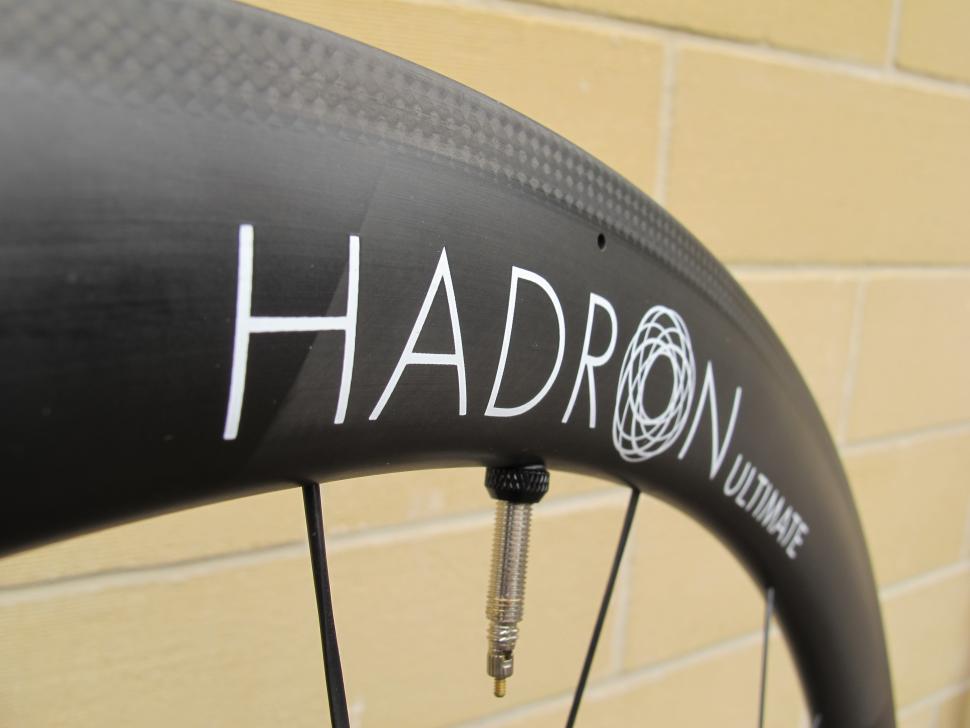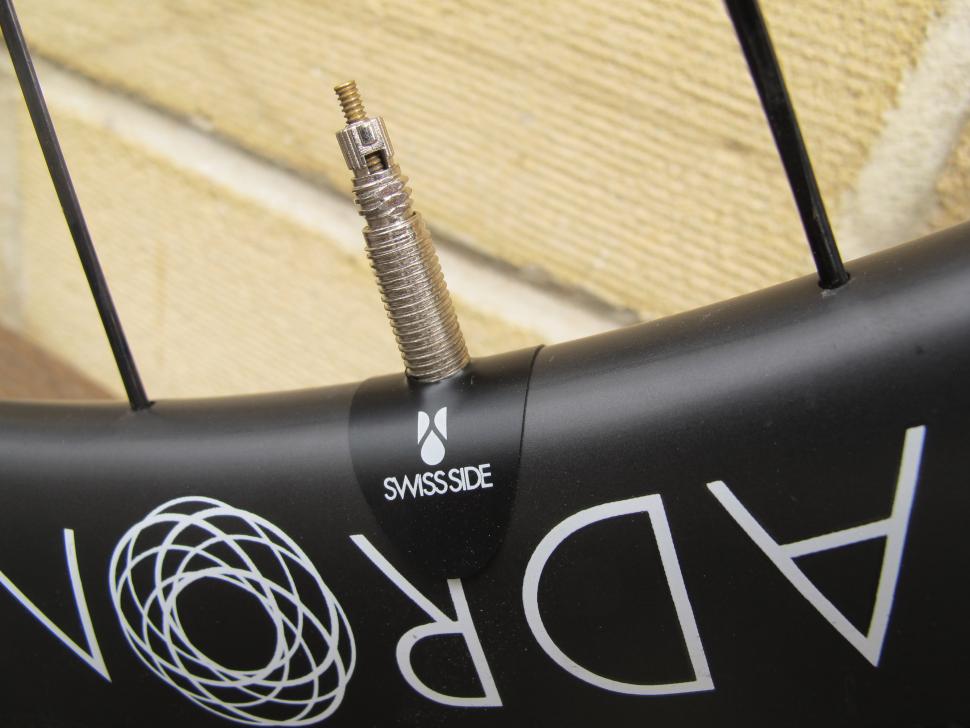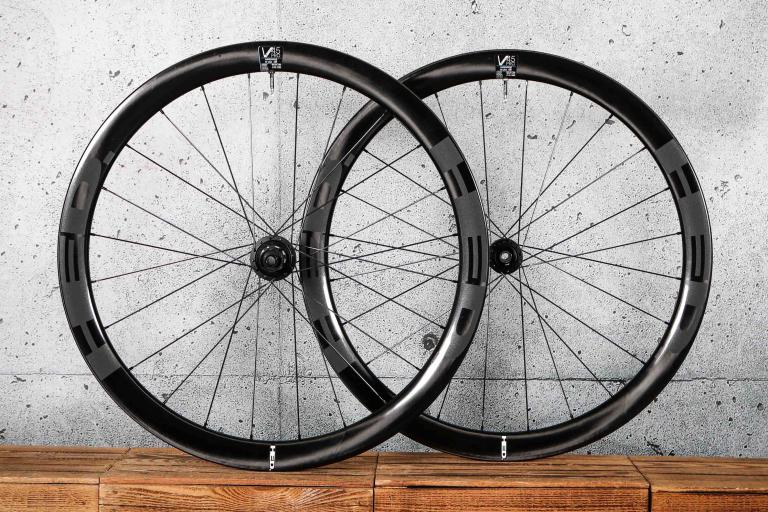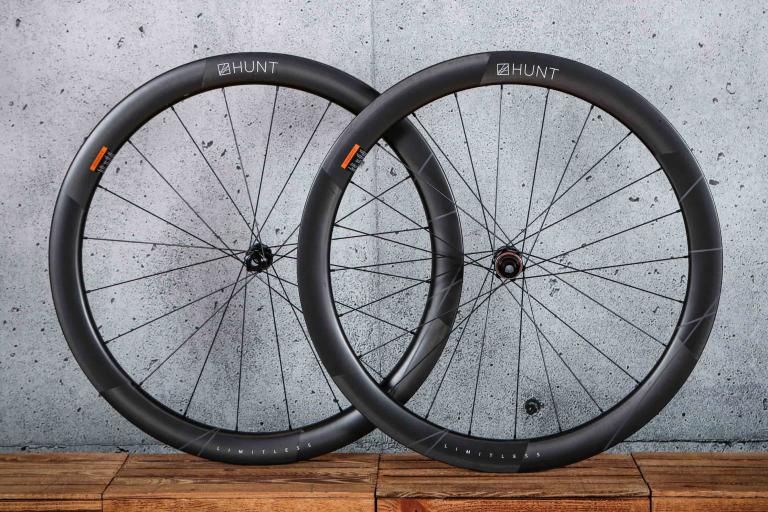- News
- Reviews
- Bikes
- Accessories
- Accessories - misc
- Computer mounts
- Bags
- Bar ends
- Bike bags & cases
- Bottle cages
- Bottles
- Cameras
- Car racks
- Child seats
- Computers
- Glasses
- GPS units
- Helmets
- Lights - front
- Lights - rear
- Lights - sets
- Locks
- Mirrors
- Mudguards
- Racks
- Pumps & CO2 inflators
- Puncture kits
- Reflectives
- Smart watches
- Stands and racks
- Trailers
- Clothing
- Components
- Bar tape & grips
- Bottom brackets
- Brake & gear cables
- Brake & STI levers
- Brake pads & spares
- Brakes
- Cassettes & freewheels
- Chains
- Chainsets & chainrings
- Derailleurs - front
- Derailleurs - rear
- Forks
- Gear levers & shifters
- Groupsets
- Handlebars & extensions
- Headsets
- Hubs
- Inner tubes
- Pedals
- Quick releases & skewers
- Saddles
- Seatposts
- Stems
- Wheels
- Tyres
- Health, fitness and nutrition
- Tools and workshop
- Miscellaneous
- Tubeless valves
- Buyers Guides
- Features
- Forum
- Recommends
- Podcast
review
£1,950.00
VERDICT:
Stronger, stiffer and (currently) cheaper than the previous version – quieter, too, which you may or may not prefer
Weight:
1,529g
Contact:
At road.cc every product is thoroughly tested for as long as it takes to get a proper insight into how well it works. Our reviewers are experienced cyclists that we trust to be objective. While we strive to ensure that opinions expressed are backed up by facts, reviews are by their nature an informed opinion, not a definitive verdict. We don't intentionally try to break anything (except locks) but we do try to look for weak points in any design. The overall score is not just an average of the other scores: it reflects both a product's function and value – with value determined by how a product compares with items of similar spec, quality, and price.
What the road.cc scores meanGood scores are more common than bad, because fortunately good products are more common than bad.
- Exceptional
- Excellent
- Very Good
- Good
- Quite good
- Average
- Not so good
- Poor
- Bad
- Appalling
Swiss Side's Hadron Ultimate 485s take the fight to the bigger players in the industry with a compelling blend of aerodynamics, exemplary build quality and a competitive price. The trademark "whoosh" sound is no more, however. Today's range of Hadron wheels might look similar to those we tested previously, but in fact no components have been carried across – they are completely different.
- Pros: Well behaved on windy days; mix and match rims; top notch hubs; DT Swiss build quality; ceramic bearings as standard; tubeless compatible
- Cons: Euro rate means they aren't as cheap for UK customers as previously; I'd like to see better skewers
The bike industry needs you to keep buying bikes, and bits of bikes, mmkay? That's why they keep designing new bikes, and why they spend so much effort making bikes better: faster, more comfortable, better looking. Vertically complicated and latterly stiff, you know the deal. Giving existing bikes or parts a new colour scheme or graphics is a good trick too, for a mid-model refresh to keep customers interested. So here's an oddity: a range of wheels that looks near enough identical to how it did when we tested it last time, but has been comprehensively redesigned.
> Find your nearest dealer here
Swiss Side offers two flavours of its Hadron aero wheelset – the Ultimate and the Classic. What's changed since we tested the Hadron 485s in 2016 is that both ranges now use full-carbon rims. In fact, Swiss Side is quite open about the fact that the current-gen Hadron Ultimate and Hadron Classic use exactly the same rims (in a range of depths and with rim- and disc-brake options). You might look at the pictures and assume that these are effectively the same wheels as the last lot of Hadron Ultimates we tested, but stay with me here – you couldn't be more wrong.
You may have read that Swiss Side and DT Swiss have collaborated on a few projects, and DT Swiss credits Swiss Side with the aerodynamic work on its high-end ARC 1100 wheels (I'll come back to that). Now DT Swiss is returning the favour, taking on the build duties for Swiss Side and providing its well-regarded 240 hubs in a revised shell that Swiss Side designed to optimise the aerodynamics.
I have ridden the previous Hadron Ultimate wheelset for thousands of miles and so was interested to see how the new model compared. There is an immediate and quite obvious difference when you first start riding. All of the first-generation Swiss Side Hadron wheels made a rather noticeable whooshing sound, like a toned-down version of a disc wheel. This was because of the way the rim was constructed – the deep section was non-structural and so thin that you could flex it between finger and thumb, and this would amplify the vibrations from the road to make a noise. I quite liked it, actually, and I lost count of how many times someone commented on what a good noise they made.
The new Hadron rim is made as a one piece with the deep section thicker than previously, adding a claimed 20 per cent more lateral stiffness to the wheels. This is a welcome move – I found the old full-carbon Hadron Ultimates were less laterally stiff than I would have liked – and the new wheels are better in this respect, allowing me to set the brake pads closer to the rim. A side-effect of this change is that the resonant sound is gone. Rim weight has also increased slightly as a consequence, by approximately 30g per set. We weighed these 48.5mm-deep Hadron Ultimates at 1,529g including rim tape and valves but excluding skewers, exactly matching Swiss Side's claimed weight.
Swiss Side offers its Hadron wheels in three rim depths: 48.5mm, 62.5mm and 80mm. The company talks a lot about the aerodynamics expertise of its engineers, some of whom come from a Formula 1 background, and has in the past published test data of the Hadron wheels compared to other leading wheelsets.
The wheels I've been testing are the shallowest; at just under 50mm they are a similar depth to many other popular carbon wheelsets. Swiss Side's test data indicates that these will save you 50 seconds over 40km, assuming a speed of 35kph, compared to a non-aero wheelset.
What's impressive about modern deep wheels is how serenely they can deliver these gains – the wide U-shaped rim that Hadron uses here appears very similar to the shape of its old wheels, and is impressively unruffled by crosswinds. That's not to say that you couldn't tell the difference between these and some shallow-section wheels on a blustery day, but I've consistently found Hadrons offer good stability in the wind. Swiss Side has made some subtle changes to the rim shape, with a smoother transition from the brake track to the fairing than the first generation wheels had.
Aero hubs
I mentioned the fact that the hubs here are an aero version of DT Swiss's 240s, with a slimmer body to offer the lowest possible frontal area. Impressively, at this price point, they come with SINC ceramic bearings as standard.
These use a ceramic material that is harder than the steel used in conventional bearings and therefore offers lower rolling resistance. You really can't tell the difference out on the road but it's another one of those marginal gains to help you go fractionally faster.
Braking
One thing that gets mentioned a lot in reviews of carbon wheels is braking, and with good reason. Aluminium rims have typically offered stronger and more predictable braking than carbon rims. Swiss Side has published a report which it says shows its full-carbon wheels now offer better braking than an aluminium rim – a bold claim!
The testing looked at how much friction was generated at the rim during a long braking event with constant brake lever force. You can read more by following the link above, but in short, the tests showed that the "friction factor" (ie effective braking) was much more consistent through the brake event with carbon rims than aluminium rims. The argument goes that this means you know what to expect and don't have to compensate by adjusting how hard you pull the levers.
There is logic here, particularly if you assume that if you pull the lever hard enough, you could lock up the wheel. All well and good, but I'd argue that while predictability is one desirable factor from brakes, just simple effectiveness (how efficiently they convert your lever pull into deceleration) is at least as important. Here the data shows that in the dry, the aluminium braking is stronger (assuming constant pad force) throughout the braking than with the carbon. What this means in practice is that you don't need to pull the levers as hard, and on a longer, hilly ride this will result in less fatigue in hands and arms.
> The pros and cons of carbon fibre wheels
I had a chat with Swiss Side about braking and was told that they expect in the next three years the large majority of wheelsets sold in this market segment will be for bikes with disc brakes. Certainly, if you look at how many medium to high end bikes are now available with disc brakes, coupled with the fact that more and more pros are making the switch, I'd say they are probably right.
There's no doubt that with a full-carbon rim, disc brakes are very much the best of both worlds – completely eliminating any reduction in brake performance. So it is good to see that Swiss Side offers all of its Hadron wheels in a choice of disc or rim brake models.
When testing, I found that braking was pretty good for a carbon rim. I used the wheels on some big rides including the 40km climb up Colle Del Nivolet, and on the way back down I had no problems stopping. On steep descents, the braking would become a little noisy as the pads and rim heated up, but I'd agree that there wasn't noticeable fade. Rim brake wheelsets are all delivered with Swiss Stop Black Prince brake pads included.
Pricing and value
Interestingly, Swiss Side has also simplified pricing now; there are now two prices, one for the Hadron Classic and one for the Hadron Ultimate (irrespective of depth or brake type). Swiss Side prices in euros and sells almost exclusively online via its own website, so the current weak pound does mean that these are more expensive to UK buyers than in the past, even though the euro price is lower. If you go for the Hadron Classic, you get lower spec 370 hubs and a downgrade on the spokes which together add around 100g to the wheelset, at a saving of €500.
Swiss Side gives a maximum weight (rider plus bike) of 100kg for the Ultimate wheels and 105kg for the Classics, thanks to the beefier spokes. They are claimed to be a further 15 per cent stiffer than the Ultimates, with almost identical aerodynamic performance (a claimed 1W extra drag at 45kph from the larger hubs).
All the current generation Hadron wheels are tubeless-compatible and supplied taped and with valves and extensions. Fitting clincher tyres with tubes was a piece of cake, and tubeless was reasonably painless too, although the Schwalbe Pro One tyres I tried were quite a tight fit. Once on the rim, they inflated and sealed with no problems.
Of course, you can still run conventional clinchers if you prefer. If you do, you'll appreciate the neat little branded stickers that are also included to stop the valves rattling in the rims – you can use electrical tape for this, but these looks better.
How do these fare against the competition? The carbon wheel market has become a lot more crowded but also accessible, with UK-supplied and warrantied deep-section wheels widely available for less than a grand. Brands such as Prime and Hunt offer very popular carbon wheelsets for less than Swiss Side, but typically use off-the-shelf parts to do so. Brands like Zipp and Enve, which develop their own parts, are generally more expensive, and Swiss Side sits somewhere in between, so they are competitively priced for a brand that does R&D and wind-tunnel development.
The closest rival to these Hadron Ultimates is a more expensive one: DT Swiss's £2,069.98 top of the range ARC 1100 DICUT. How come? Well, I noticed certain similarities between it and these wheels, both visual and in terms of rim depths and hubs, so I asked the obvious question: are they actually the same wheels?
Very nearly, is the answer. The only difference is that DT Swiss uses a lighter and faster-engaging 36-tooth aluminium ratchet in the freehub for the ARC 1100 wheels, whereas it builds the Hadron Ultimates with an 18-tooth steel ratchet. DT Swiss also sells via shops whereas Swiss Side is an online business, so that helps keep the pricing down too. So you can get DT Swiss's top wheelset for less money here – what's not to like?
I think the Hadron Classic is even better value, and that might be what I'd buy. At the time of writing, Swiss Side has a sale on, with 30 per cent off these and the Classic versions, making the Ultimates £1,362 at the current exchange rate. That's a great deal.
> Buyer's Guide: 37 of the best road bike wheels
In summary, the combination of Swiss Side's aerodynamics expertise and DT Swiss's production quality yields good results here, and for less than the almost identical wheelset that DT Swiss sells. They are very easy to live with and stable on windier days, so if you're still using rim brakes you could do a lot worse than these. And if you're already on disc brakes, well, you're in luck too.
Verdict
Stronger, stiffer and (currently) cheaper than the previous version – quieter, too, which you may or may not prefer
road.cc test report
Make and model: Swiss Side Hadron Ultimate 485 wheels
Size tested: 700C, 48.5mm deep
Tell us what the wheel is for and who it's aimed at. What do the manufacturers say about it? How does that compare to your own feelings about it?
Swiss Side says, "Top level aero performance on any course, in any conditions, the HADRON Ultimate 485 is at home speeding down twisty mountain passes, as well as time trial and triathlon courses. Their shallow rim profiles are designed to maximise handling in high wind conditions by minimising the response and sensitivity to gusty crosswinds. Available in both rim brake and disc brake versions. UCI approved.
"The world's fastest aero wheels! Using the latest in aerodynamic and engineering development methods transferred from Formula 1, the HADRON Ultimate sets new benchmarks for aero wheel performance & quality. The HADRON Ultimates are designed for minimising the drag of the wheels but also on the bike & rider system. This is achieved by ensuring maximum aero stability and predictability in the wind so that the rider remains in their aero position for the maximum time. Tubeless ready full carbon construction rims, assembled with the world's best DT Swiss 240S aero hubs with SINC ceramic bearings and with optimised aerodynamic shape in collaboration with Swiss Side. With wheel manufacture & assembly by DT Swiss for Swiss Side, the absolute highest possible Swiss precision, quality and durability is assured."
Tell us some more about the technical aspects of the wheel?
From Swiss Side:
Full carbon rim, depth 48.5mm, max width 25mm, brake track width 23mm
COMPATIBILITY
Shimano, SRAM 10&11 speed cassettes (standard). XDR Driver & Campagnolo compatible with freehub kits available separately.
HUB
DT Swiss 240s, custom for Swiss Side. Rim brake wheel hub/axle dimensions are: 5 x 100mm QR front / 5 x 130mm QR rear.
SPOKES
DT Swiss Aerolite and Aero Comp Straightpull spokes with DT Swiss pro lock hidden aluminium nipples.
Front Rim Brake (radial pattern): 16 spokes (20 spokes for 485).
Rear Rim Brake (2:1 pattern): 21 spokes (24 spokes for 485).
BEARINGS
SINC ceramic bearings
Rate the wheel for quality of construction:
9/10
Very well made wheelset, delivered tight and true. Now that the deep section part of the rim is a structural part of the rim, the overall package feels more robust.
Rate the wheel for performance:
9/10
Behaves well in crosswinds, braking is improved compared with the previous generation Hadron Ultimates. Lateral stiffness is also improved.
Rate the wheel for durability:
8/10
No issues or concerns.
Rate the wheel for weight
7/10
Not a class-leading weight but reasonable.
Rate the wheel for value:
6/10
At full RRP, the Hadron Ultimates are an expensive pair of wheels, albeit a bit less than the almost identical DT Swiss ARC1100 wheelset. The price sets them up against some other excellent wheels, and while they certainly hold their own (and things like the ceramic bearings are nice to have), you wouldn't describe them as a bargain (at full RRP).
Did the wheels stay true? Any issues with spoke tension?
No issues.
How easy did you find it to fit tyres?
Easy to fit clinchers. Going tubeless with a 28mm Schwalbe Pro One TLE was quite a tight fit but then inflated easily.
How did the wheel extras (eg skewers and rim tape) perform?
Wheelsets are delivered taped. The skewers are okay, perhaps a bit ordinary at this price point.
Tell us how the wheel performed overall when used for its designed purpose
I had no complaints – they survived some big days in the mountains with no issues at all. Braking is predictable and generally good for carbon wheels, although I would argue that it's not quite at the level of a good aluminium rim.
Tell us what you particularly liked about the wheel
Generally well-built, dependable and fast wheelset with excellent handling in the wind.
Tell us what you particularly disliked about the wheel
Nothing much.
How does the price compare to that of similar products in the market, including ones recently tested on road.cc?
There's such a huge spectrum in terms of carbon wheel pricing now. We've reviewed a lot of cheaper carbon wheelsets in recent months but mostly from new upstart brands, many of which are now coming in under the magic £1k price point. Looking back, the large majority of carbon wheels we've tested in the last year have been cheaper than these.
Did you enjoy using the wheel? Yes
Would you consider buying the wheel? Yes
Would you recommend the wheel to a friend? Yes
Use this box to explain your overall score
These are very good wheels. A lot of buyers' heads may be turned by the cheaper upstarts in the marketplace, but these are almost identical to DT Swiss's top wheelset and for less money.
About the tester
Age: 37
I usually ride: On-one Bish Bash Bosh My best bike is: Rose X-Lite CRS
I've been riding for: Over 20 years I ride: Most days I would class myself as: Expert
I regularly do the following types of riding: road racing, time trialling, cyclo-cross, commuting, touring, club rides, sportives, general fitness riding, fixed/singlespeed, mountain biking
Jez spends his days making robots that drive cars but is happiest when on two wheels. His roots are in mountain biking but he spends more time nowadays on the road, occasionally racing but more often just riding.




























Indeed. For example as this review highlights, this case doesn't work for larger smartphones whilst a sandwich bag will fit all modern phones so in...
Since it doesn't go anywhere useful (yet) ... why not call it a cycle path?...
It looks like a lot of watch for the money, but there doesn't seem to be any way to sync to Garmin Connect other than using something like Tapiriik...
That's an appalling case and an extremely lenient sentence given it sounds very like a racially aggravated assault. I assume the attacker is an...
"The strength of community feeling around this was very vocal........"...
Not only are irrational numbers real, the vast majority of real numbers are irrational. Also, almost every integer contains the digit '3'.
Car paint is a good idea, but my previous attempts haven't been good, so I'll leave it to someone that knows what they're doing!
Maybe someone stuck all their stuff to the ceiling.
Jeez you're all cynical... ...
I have this light, I agree with every point made, it's a good solid light that's overkill for 95% of it's use (good for taking the dogs out for a...